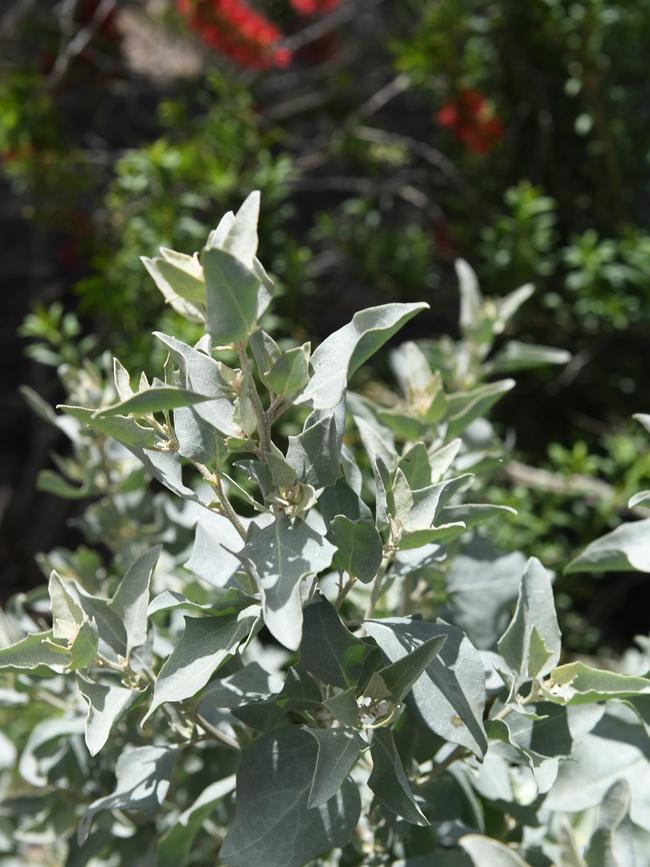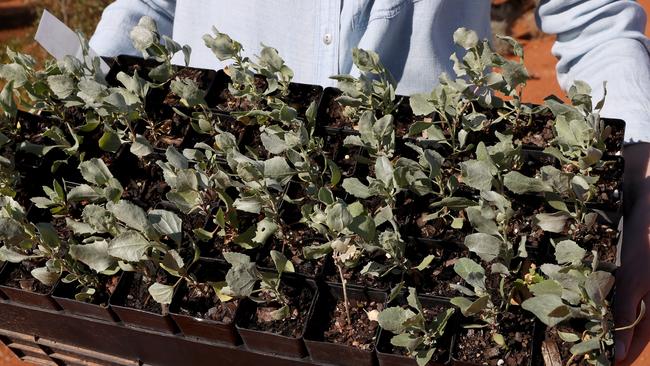
It’s none other than saltbush, which can slash global carbon emissions and become a major source of world protein to relieve world food shortages.
Once the world discovers that Australia has the ability to store more carbon than any other nation, we will almost certainly be required to act.
In the process, Australia has the potential to be a Middle East in reverse.
And as Australians become aware of our lucrative potential new role in the world, it will become a debating point in any referendum concerning the so-called ‘Uluru statement’.
Australian booms normally require a driver.
For wool, it was John Macarthur; for gold, it was Edward Hargraves.
Lang Hancock drove iron ore and Geoff Donaldson did the same for gas.
But we don’t need to discover saltbush, because it’s embedded in our history and its potential is already well documented.
Just as iron ore needed the vision of former WA minerals development minister and premier, the late Charles Court, so saltbush and similar plants need politicians of vision to clear the obstacles.
Malcolm Turnbull was the first Australian prime minister to see how saltbush can slash carbon emissions, but his realisation got buried in the Coalition’s climate wars and his unsuccessful battle to survive.

And it stayed buried until the final months of the Morrison reign when some ministers discovered the potential of saltbush to store carbon and underwrite low-cost reliable power transformation.
But it was too late to save the government and in particular, Josh Frydenberg and the other Coalition people who lost their seats to the Teals.
Now there is a new government, but carbon reduction is once again the subject of many different views.
The potential of saltbush may be again lost if new climate wars break out.
The Coalition has their fingers crossed that the ALP will not understand saltbush, so they can use it as a linchpin to win back office in three years.
We need to recognise that saltbush is part of both our first nation and Parliamentary history and then, with the help of experts, map out of plan to grow saltbush and similar plants on a massive scale.
Saltbush Bill was a character in a number of Banjo Paterson poems.
But he was a real person who was invited to perform his whipcracking in front of the Duke of York (who later became George V) after the opening of the Federal Parliament in 1901.
The Duke was so impressed by Saltbush Bill that he invited him to give an exhibition in London, which he did some years later.
Some 122 years later, the retired head of the CSIRO energy division David Brockway maps a new saltbush future.
He says that over the last 500 million years, atmospheric carbon dioxide dropped from about 4000 ppm to about 200 ppm as plants via photosynthesis and microorganisms captured atmospheric carbon dioxide and sequestered that carbon in various forms.

But about 70 years ago that sequestration was replaced by carbon release.
“Because we are releasing that sequestered carbon back into the atmosphere with dangerous climate consequences, the resumption of drawing down atmospheric carbon dioxide is essential even if we reach zero emissions by 2050,” he says.
Although other plant species can be used, in essence saltbush looks to be the cheapest and easiest way to extract carbon from the air and store it underground via its massive root systems.
In addition the world is becoming short of protein and so saltbush plants can be harvested as an export crop or used for cattle and other animals in Australia.
Brockway elaborates this way: “By the substantial planting of deep-root species, deep into the soil where the carbon is stored, we can substantially draw down atmospheric carbon dioxide concentrations over several decades.
“Deep-root species have a particular advantage in that significant amounts of carbon can be stored under conditions whereby the longevity of the carbon stored in the soil lasts for millennia, possibly for millions of years.
“For all intents and purposes – and certainly over the time frame required before renewables can become adopted universally – carbon stored in deep-root systems can be used to almost permanently remove carbon dioxide from the atmosphere.
“And it can be achieved in a very cost-effective manner.
“Australia has the unique opportunity to make a significant contribution to drawing down atmospheric carbon dioxide utilising its vast areas of marginal land with deep-root species suited to its marginal and under- productive nature,” he says.
The Australian government-funded Agri Futures group says that saltbush can be grown in more than 60 per cent of the Australian mainland, covering most of WA, Northern Territory South Australia and in parts of NSW and Victoria.
Saltbush can be grown in arid low rainfall areas although its salt content means that it must be combined with other plants when harvested as a source of protein.
The biggest single protein market is China, which has some 400 million pigs and imports soya beans as a source of protein.
Massive saltbush planting and carbon absorption will enable an orderly rundown of carbon-based fuels, while the carbon storage will create carbon credits with a high global market value.
The potential rewards for Australia over the next decade or two are massive, but we need to do more carbon verification work to take any controversy out of the storage process.




Over the centuries Australia has been transformed by major rural and mineral developments. We rode on the sheep's’ back, then came gold and more recently, iron ore, gas and coal. Australia’s next potential bonanza comes from an unlikely source, but it could be a world-changer.